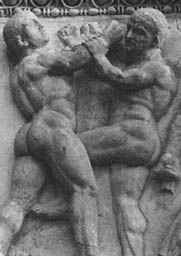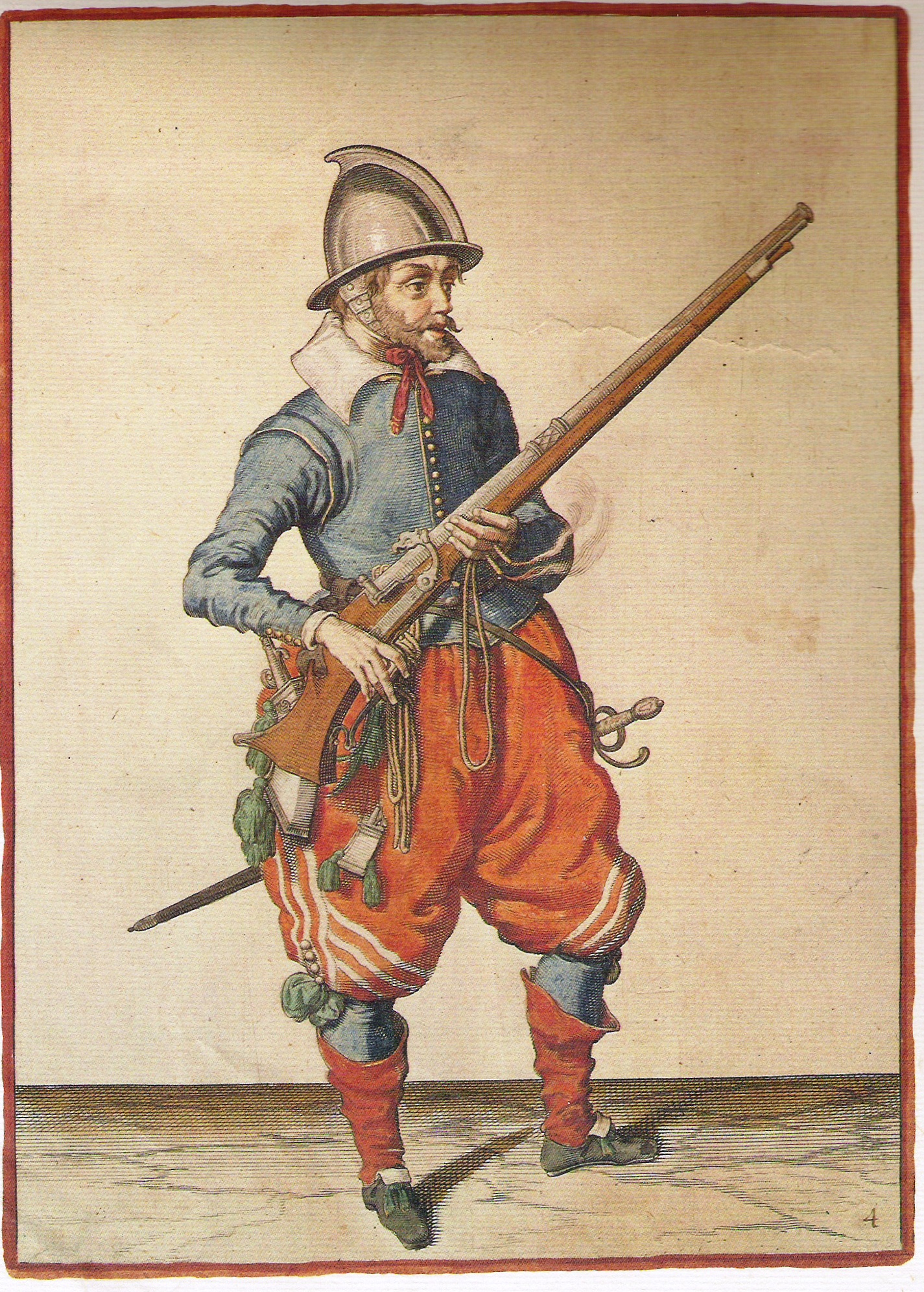|
Buff Coat
The European buff coat is an item of leather clothing that was primarily worn by cavalry and officers during the 17th century, but also worn by a small number of infantry. It was often worn under iron or steel armour for the torso ( back and breast plate). The buff coat was derived from the simple leather jerkins employed by huntsmen and soldiers during the Tudor period, these in turn deriving from the arming doublet. The name of the jacket, as well as its characteristic tan or ''buff'' colour, derives from the buffalo or ox hide from which it was commonly made. Production, appearance and variation The buff coat was worn as European military attire from around 1600 through to the 1680s. The origin of the term 'buff' in relation to the coat refers to leather obtained from the "European buffalo" (available sources do not specify what species this term means, but it most probably refers to the Wisent), which also gave rise to the term ''buff'' for its light tan colour. The only sou ... [...More Info...] [...Related Items...] OR: [Wikipedia] [Google] [Baidu] |
Richard Neville (soldier)
Richard Neville Deputy Lieutenant, DL (30 May 1615 – 7 October 1676) served in the English Civil War as a Royalist. He came to prominence as commander at the First Battle of Newbury in 1643 when he commanded the Royalist troops. Biography Neville was born at Billingbear House in Waltham St Lawrence, the son and heir of Sir Henry Neville (died 1629) and educated at Queens' College, Cambridge (1631). He was the elder brother of the writer Henry Neville (writer), Henry Neville. His mother, Elizabeth (née Smyth), was given immediate rights to the manor in her lifetime, remarried Sir John Thorowgood and lived until 1669. Neville's grandfather was Henry Neville (politician), Henry Neville, the Elizabethan politician, diplomat and courtier. Neville joined the Royalists and served under the Earl of Carnarvon at the First Battle of Newbury, Battle of Newbury in 1643. Carnarvon was killed and Neville took up the command as a Colonel of Horse. He was appointed High Sheriff of Berkshire f ... [...More Info...] [...Related Items...] OR: [Wikipedia] [Google] [Baidu] |
Leather Clothing
Leather is a strong, flexible and durable material obtained from the tanning, or chemical treatment, of animal skins and hides to prevent decay. The most common leathers come from cattle, sheep, goats, equine animals, buffalo, pigs and hogs, and aquatic animals such as seals and alligators. Leather can be used to make a variety of items, including clothing, footwear, handbags, furniture, tools and sports equipment, and lasts for decades. Leather making has been practiced for more than 7,000 years and the leading producers of leather today are China and India. Animal rights groups claim that modern commercial leather making and the consumption of its products is unethically killing animals. According to the life-cycle assessment (LCA) report for the United Nations Industrial Development Organization, 99% of the raw hides and skins used in the production of leather derive from animals raised for meat and/or dairy production. Critics of tanneries claim that they engage in uns ... [...More Info...] [...Related Items...] OR: [Wikipedia] [Google] [Baidu] |
Coats (clothing)
{{disambig ...
Coats may refer to: People *Coats (surname) Places * Coats, Kansas, US * Coats, North Carolina, US *Coats Island, Nunavut, Canada *Coats Land, region of Antarctica Other uses *Coat (clothing), an outer garment *Coats' disease, a human eye disorder *Coats Mission, British military mission 1941–42 *Coats Group, a multinational sewing and needlecraft supplies manufacturer *Coats Steam Car, American automobile manufactured 1922–23 *Stewart-Coats, American automobile manufactured only in 1922 *Cadet Organizations Administration and Training Service, a sub-component of the Canadian Forces Reserves See also *Coat (other) *Coates (other) *Cotes (other) Cotes may refer to: Placename * Cotes, Cumbria, a village in England * Cotes, Leicestershire, a village in England * Cotes, Staffordshire, a village in England; see List of United Kingdom locations: Cos-Cou * Cotes, Valencia, a municipality in ... [...More Info...] [...Related Items...] OR: [Wikipedia] [Google] [Baidu] |
Body Armor
Body armor, also known as body armour, personal armor or armour, or a suit or coat of armor, is protective clothing designed to absorb or deflect physical attacks. Historically used to protect military personnel, today it is also used by various types of police (riot police in particular), private security guards or bodyguards, and occasionally ordinary civilians. Today there are two main types: regular non-plated body armor for moderate to substantial protection, and hard-plate reinforced body armor for maximum protection, such as used by combat soldiers. History Many factors have affected the development of personal armor throughout human history. Significant factors in the development of armor include the economic and technological necessities of armor production. For instance full plate armor first appeared in Medieval Europe when water-powered trip hammers made the formation of plates faster and cheaper. At times the development of armor has run parallel to the develo ... [...More Info...] [...Related Items...] OR: [Wikipedia] [Google] [Baidu] |
Gambeson
A gambeson (also aketon, padded jack, pourpoint, or arming doublet) is a padded defensive jacket, worn as armour separately, or combined with mail or plate armour. Gambesons were produced with a sewing technique called quilting. They were usually constructed of linen or wool; the stuffing varied, and could be for example scrap cloth or horse hair. During the 14th century, illustrations usually show buttons or laces up the front. An arming doublet (also called aketon) worn under armour, particularly plate armour of fifteenth- and sixteenth-century Europe, contains arming points for attaching plates. Fifteenth century examples may include mail goussets sewn into the elbows and armpits to protect the wearer in locations not covered by plate. German gothic armour arming doublets were generally shorter than Italian white armour doublets, which could extend to the upper thigh. In late fifteenth century Italy this also became a civilian fashion. Men who were not knights wore arming dou ... [...More Info...] [...Related Items...] OR: [Wikipedia] [Google] [Baidu] |
Hand-to-hand Combat
Hand-to-hand combat (sometimes abbreviated as HTH or H2H) is a physical confrontation between two or more persons at short range (grappling distance or within the physical reach of a handheld weapon) that does not involve the use of weapons.Hunsicker, A., ''Advanced Skills in Executive Protection'', Boca Raton FL: Universal Publishers, , , p. 51 The phrase "hand-to-hand" sometimes include use of melee weapons such as knives, swords, clubs, spears, axes, or improvised weapons such as entrenching tools. While the term "hand-to-hand combat" originally referred principally to engagements by combatants on the battlefield, it can also refer to any personal physical engagement by two or more people, including law enforcement officers, civilians, and criminals. Combat within close quarters, to a range just beyond grappling distance, is commonly termed close combat or close-quarters combat. It may include lethal and non-lethal weapons and methods depending upon the restrictions impos ... [...More Info...] [...Related Items...] OR: [Wikipedia] [Google] [Baidu] |
Pike And Shot
Pike and shot was a historical infantry tactical formation that first appeared during the Italian Wars of the late 15th and early 16th centuries, and was used until the development of the bayonet in the late 17th century. This type of formation combined soldiers armed with pikes and soldiers armed with arquebuses and/or muskets. Other weapons such as swords, halberds, and crossbows were also sometimes implemented. The formation was initially developed by the armies of the Holy Roman Empire (''Landsknechte'') and of the Spanish Crown (''Tercios''), and later by the Dutch and Swedish armies in the 17th century. Origin By the end of the fifteenth century, late-medieval troop types that had proven most successful in the Hundred Years' War and Burgundian Wars dominated European warfare, especially the heavily armoured ''gendarme'' (a professional version of the medieval knight), the Swiss and Landsknecht mercenary pikemen. The emerging artillery corps of heavy cannons was a rapidly ... [...More Info...] [...Related Items...] OR: [Wikipedia] [Google] [Baidu] |
Musketeer
A musketeer (french: mousquetaire) was a type of soldier equipped with a musket. Musketeers were an important part of early modern warfare particularly in Europe as they normally comprised the majority of their infantry. The musketeer was a precursor to the rifleman. Muskets were replaced by rifles as the almost universal firearm for modern armies during the period 1850 to 1860. The traditional designation of "musketeer" for an infantry private survived in the Imperial German Army until World War I. Asia China The hand cannon was invented in China in the 12th century and was in widespread use there in the 13th century. It spread westward across Asia during the 14th century. Arquebusiers and musketeers were utilized in the armies of the Ming (1368–1644) and Qing dynasties (1644–1911). Zhao Shizhen's book of 1598 AD, the ''Shenqipu'', contains illustrations of Ottoman Turkish and European musketeers together with detailed diagrams of their muskets.Needham, Volume 5, Par ... [...More Info...] [...Related Items...] OR: [Wikipedia] [Google] [Baidu] |
Foot Soldier
Infantry is a military specialization which engages in ground combat on foot. Infantry generally consists of light infantry, mountain infantry, motorized infantry & mechanized infantry, airborne infantry, air assault infantry, and marine infantry. Although disused in modern times, heavy infantry also commonly made up the bulk of many historic armies. Infantry, cavalry, and artillery have traditionally made up the core of the combat arms professions of various armies, with the infantry almost always comprising the largest portion of these forces. Etymology and terminology In English, use of the term ''infantry'' began about the 1570s, describing soldiers who march and fight on foot. The word derives from Middle French ''infanterie'', from older Italian (also Spanish) ''infanteria'' (foot soldiers too inexperienced for cavalry), from Latin '' īnfāns'' (without speech, newborn, foolish), from which English also gets '' infant''. The individual-soldier term ''infantrym ... [...More Info...] [...Related Items...] OR: [Wikipedia] [Google] [Baidu] |
Harquebusier
The harquebusier was the most common form of cavalry found throughout Western Europe during the early to mid-17th century. Early harquebusiers were characterised by the use of a type of carbine called a "harquebus". In England, harquebusier was the technical name for this type of cavalry, though in everyday usage they were usually simply called 'cavalry' or 'horse'. In Germany they were often termed ''Ringerpferd'', or sometimes ''Reiter'', in Sweden they were called ''lätta ryttare''. Development According to John Cruso in his cavalry manual of 1632, the harquebusier was 'first invented in France'. This type of cavalryman was characterised by the use of a form of carbine, the earliest type of carbine used was called a "''harquebus''" (a word derived from the heavier infantry weapon, the arquebus). In the late 16th century and into the first decades of the following century the harquebusier was envisioned, like the similar and earlier ''petronel,'' as a support for more heavily ... [...More Info...] [...Related Items...] OR: [Wikipedia] [Google] [Baidu] |
Lobster-tailed Pot Helmet
The lobster-tailed pot helmet, also known as the zischägge, horseman's pot and harquebusier's pot, was a type of post-Renaissance combat helmet. It became popular in Europe, especially for cavalry and officers, from c. 1600; it was derived from an Ottoman Turkish helmet type. The helmet gradually fell out of use in most of Europe in the late 17th century; however, the Austrian heavy cavalry retained it for some campaigns as late as the 1780s. Origin The lobster-tailed pot helmet had an oriental origin, being derived from the Ottoman Turkish çiçak (pronounced 'chichak', Turkish – ''çiçek'' Çiçek means flower in Turkish which is attributed to the shape of the helmets top side) helmet, which developed in the 16th century. It was adopted by the Christian states of Europe in the early 17th century. The chichak was almost identical to the later European helmets – it had a forward projecting peak, sliding bar nasal, cheekpieces and neck guard; only its tendency to have a co ... [...More Info...] [...Related Items...] OR: [Wikipedia] [Google] [Baidu] |







.jpg)
